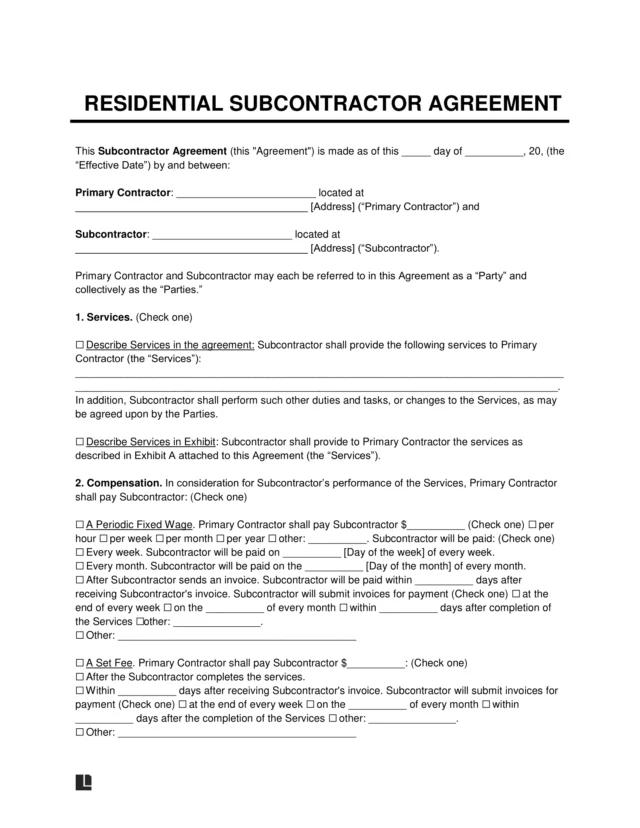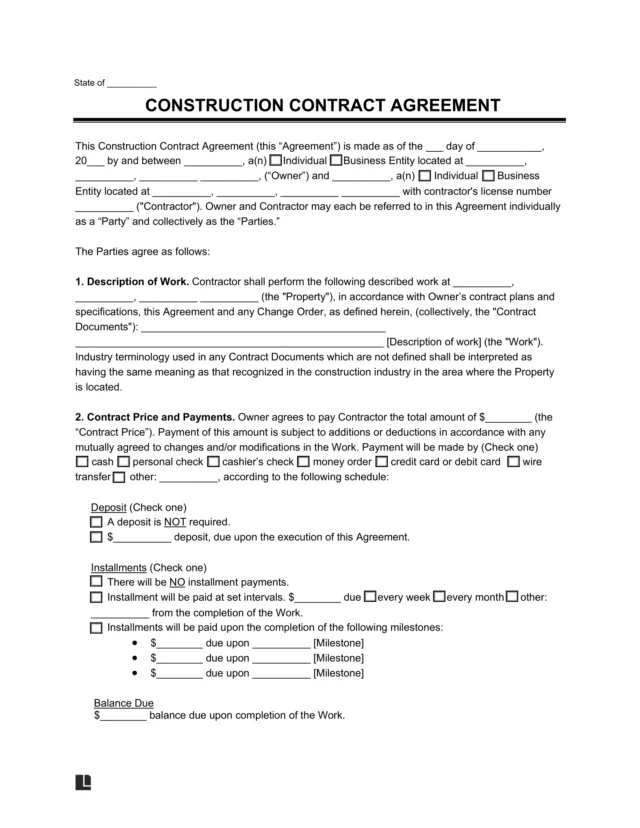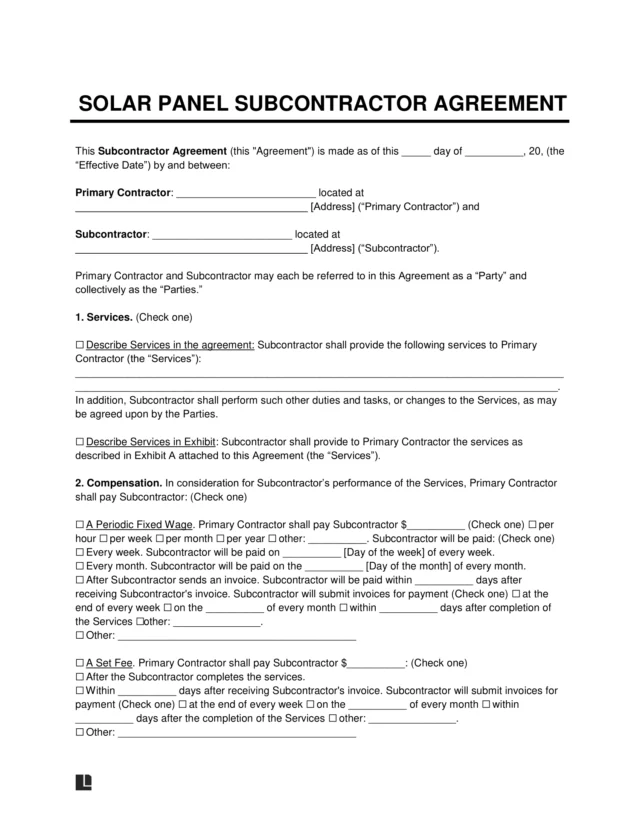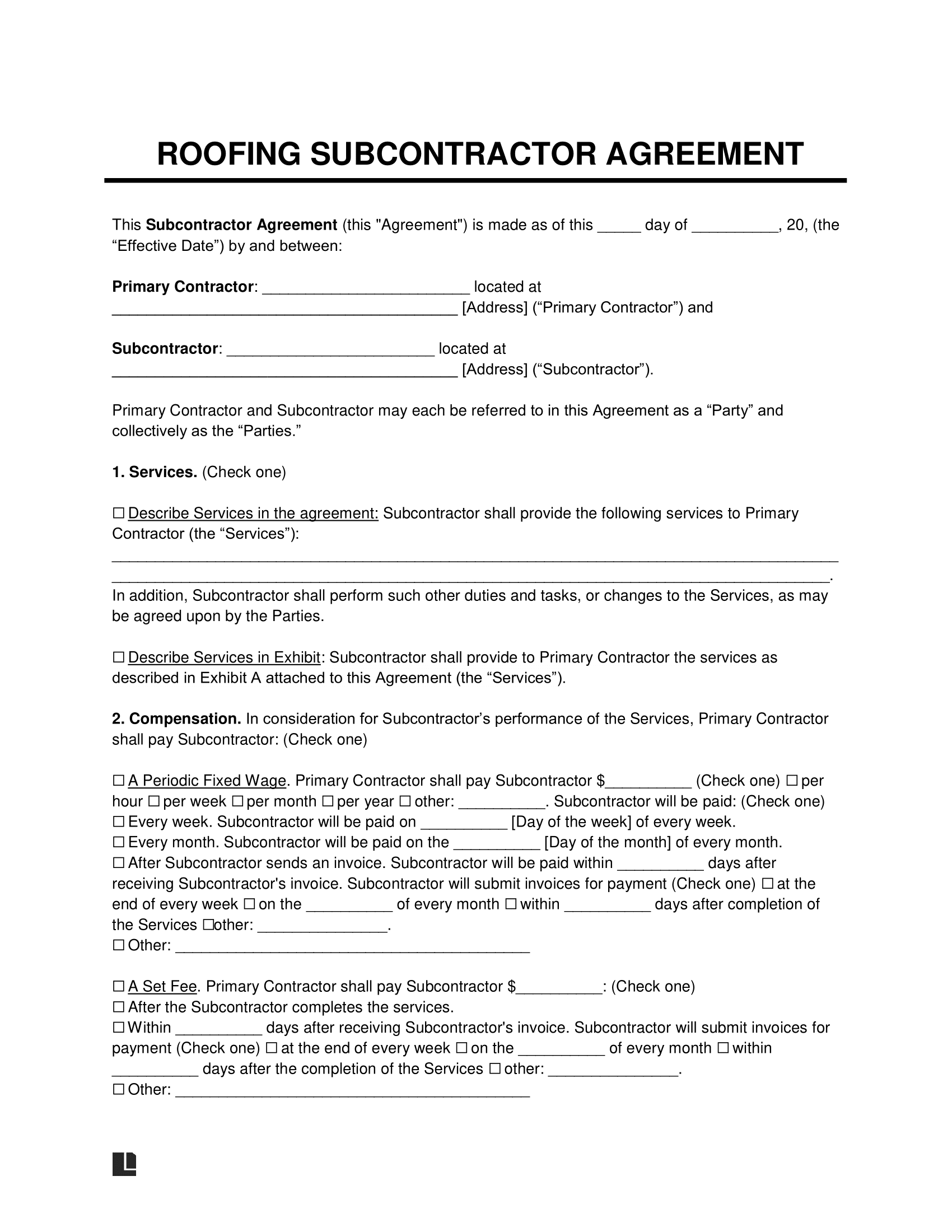What Is a Roofing Subcontractor Agreement?
A roofing subcontractor agreement lays out the terms of employment between a general contractor for a construction project and a roofer to whom they allocate roof repairs, replacements, cleaning, installations, or siding.
The agreement should detail the roof specifications and the roofer’s responsibilities, including who is accountable for employees, materials, equipment, travel, and other liabilities.
When to Use
Roofers are often hired as part of a greater construction project on a contract basis for an array of services they offer, including:
- Roof inspection or consultation
- Roof maintenance
- Roof installation
- Roof replacement
- Roof cleaning
- Roof painting
- Roof treatment
- Debris removal
- Weatherproofing
- Insulating
- Ventilating
Hiring Roofing Subcontractors
Hiring a roofing subcontractor who can be trusted to deliver a high-quality standard is essential as a general contractor. Their work will reflect on your reputation with the customer and for future jobs.
Types of Roofing Contractors
You may need to hire a few different types of roofing contractors, depending on the nature of the job that requires a roofer. The most common include:
- Commercial roofers – who specialize in the installation and repair of commercial roofs
- Residential roofers – who primarily work on roofs for private residences
- Shingles roofers – who specialize in the installation and repair of shingle roofs
- Metal roofers – who specialize in working with metal roofing
Roofing subcontractor agreements may vary depending on the kind of project for which a roofer is required and the business itself.
Why Use a Roofing Subcontractor Agreement?
A roofing subcontractor agreement breaks down what is expected of both sides, detailing the work the roofer must perform to complete the job and the contractor’s compensation.
You can hold the other side to their agreement and enforce it legally with a signed agreement. It also clarifies for both parties how the contract may be terminated and at what time, if need be.
What to Include
There are a few important standards to include in a roofing subcontractor agreement:
- Description of work: If this does not fit within the subcontractor agreement, you may attach it as an exhibit. This goes into all of the duties that the subcontractor must perform.
- Compensation: The compensation section explains how much the general contractor agrees to pay the subcontractor, over what period of time, and in what way.
- Termination: When does the agreement end, and under what circumstances can it end earlier?
Determining which party will be held accountable for roofing materials, equipment, travel, employees, and any additional liabilities is crucial.
Roofing Subcontractor Agreement Sample
Download the roofing subcontractor agreement template, available in PDF and Word.
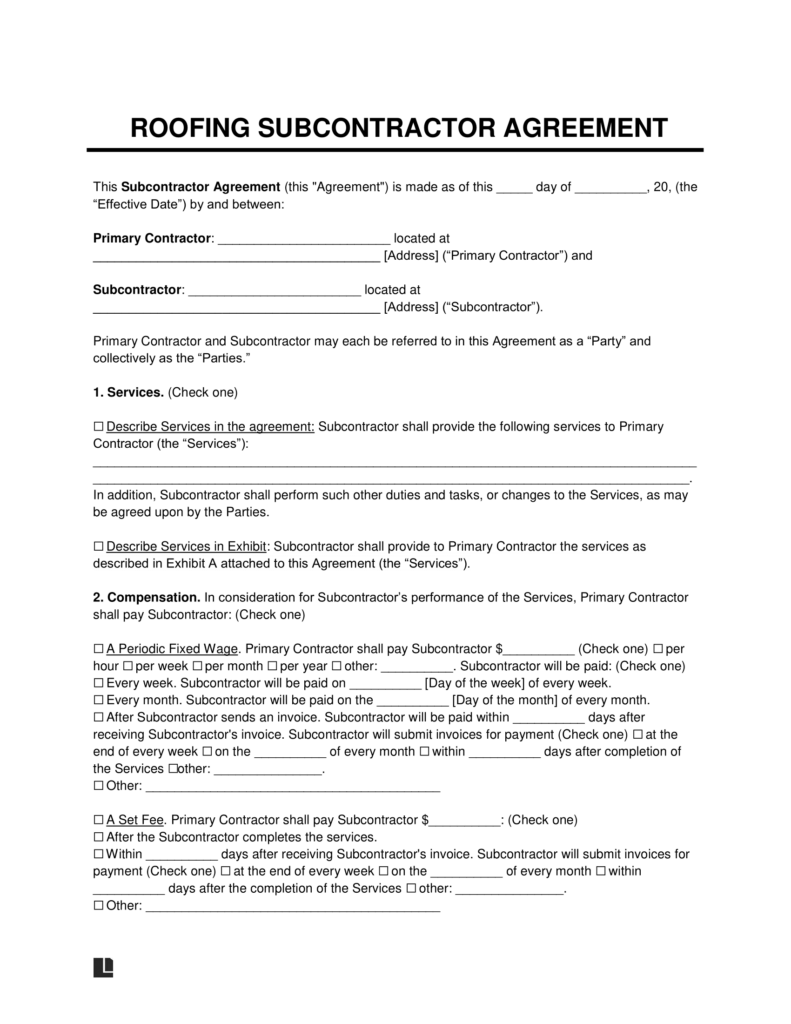
Frequently Asked Questions
What is a roofing subcontractor performance bond?
An insurance company issues a performance bond to ensure that the roofing work is completed to quality standards. With the money held in escrow, no funds are lost should the subcontractor fail to finish the job and you have to bring in a new subcontractor.
What is a roofing subcontractor payment bond?
A payment bond is money held in escrow by the contractor to ensure that all roofing subcontractors are paid at the end of the project.



